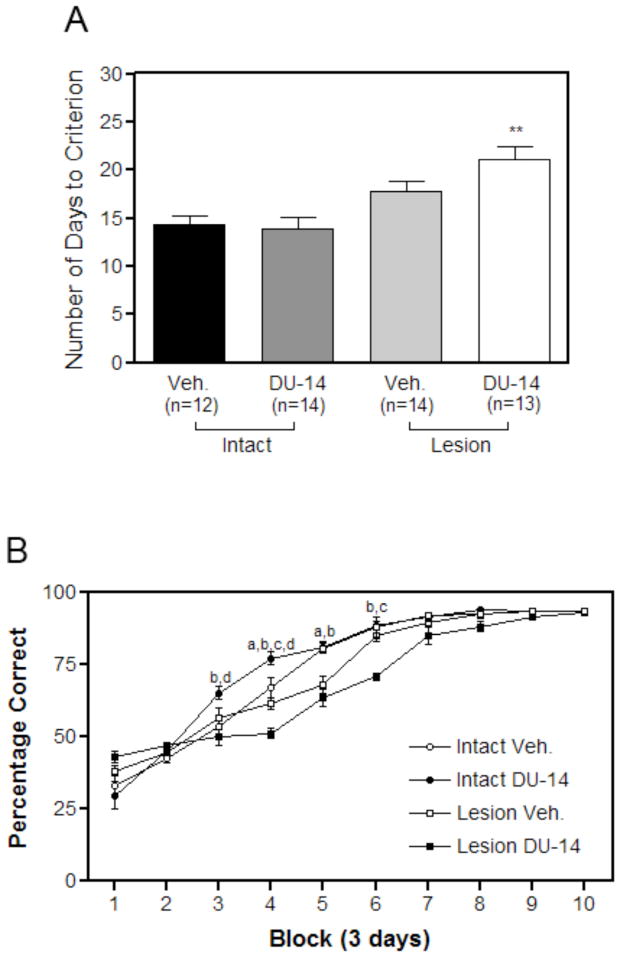Figure 5.
(A) The effect of DU-14 treatment on the number of days to reach criterion in the DMP T-maze task. Bar graph representing the effect of DU-14 treatment on spatial acquisition of MS cholinergic lesioned rats. Bars represents the mean number of days to reach criterion ± SEM. Data analyzed by two-way ANOVA with Boneferroni post-hoc test reveals a significant effect of lesion (p<0.001) but no significant effect of treatment or interaction. DU-14 treated lesioned animals (n=13) required significantly more days to reach criterion than the lesioned vehicle treated animals (n=14 ** p < 0.01 Bonferroni post-hoc test). DU-14 had no effect on days to criterion of intact control animals (n=12 intact vehicle; n=14 intact DU-14). (B) The effect of DU-14 treatment on the rate of acquisition in the DMP T-maze task for lesioned rats: Points represent the mean percentage correct for each treatment group during a 3 day training period. Note that all groups showed improved performance over time; however during blocks 4 and 6 the performance of the lesioned DU-14 treated animals was significantly worse than the corresponding lesioned vehicle treated animals. Also during blocks 3 and 4 intact vehicle treated animals performed significantly worse than intact DU-14 treated animals. Performance during acquisition testing was analyzed using two-way repeated measures ANOVA (General Liner Model, RM-ANOVA) for overall effects of block and treatment and one-way ANOVA with a Newman-Keuls post-hoc test for treatments within blocks. a: p< 0.005 for intact vehicle treated animals relative to lesioned vehicle treated animals. b: p< 0.005 for intact DU-14 treated animals relative to lesioned DU-14 treated animals. c: p< 0.005 for lesioned vehicle treated animals relative to lesioned DU-14 treated animals. d: p< 0.005 for intact vehicle treated animals relative to intact DU-14 treated animals.

